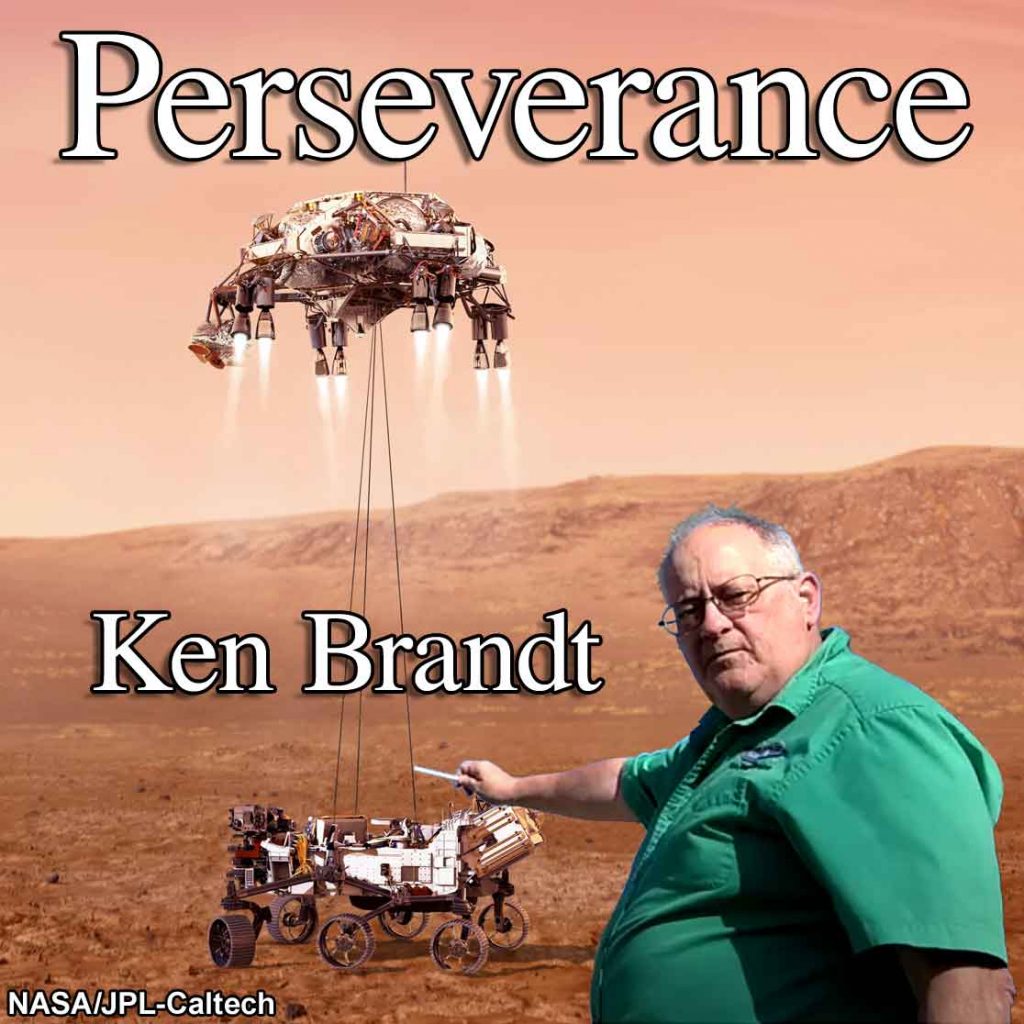Podcaster: Ken Brandt

Title: Happy First Earth Birthday, Perseverance and Ingenuity!
Organization: Robeson Planetarium/JPL Solar System Ambassador
Link: https://www.robeson.k12.nc.us/o/robeson/page/robeson-planetarium
Description:
This is the story of Perseverance and Ingenuity achievement after a year in Mars.
Bio: Ken Directs the Robeson Planetarium in rural North Carolina. He is also a volunteer in NASA/JPL’s Solar System Ambassador program, which is a national network of passionate volunteers who explain and educate about space exploration for their audiences.
Today’s sponsor: Big thanks to our Patreon supporters this month: Rob Leeson, David Bowes, Ron Diehl, Brett Duane, Benett Bolek, Mary Ann, Frank Frankovic, Michael Freedman, Kim Hay, Steven Emert, Frank Tippin, Rani Bush, Jako Danar, Joseph J. Biernat, Nik Whitehead, Semyon Torfason, Michael W, Cherry Wood, Steve Nerlich, Steven Kluth, James K Wood, Katrina Ince, Phyllis Foster, Don Swartwout, Barbara Geier, Steven Jansen
Please consider sponsoring a day or two. Just click on the “Donate” button on the lower left side of this webpage, or contact us at signup@365daysofastronomy.org.
Please visit our Patreon page: https://www.patreon.com/365DaysOfAstronomy
or you can consider to sponsor a day of our podcast : https://cosmoquest.org/x/365daysofastronomy/product/sponsor-an-episode-of-365-days-of-astronomy/
Transcript:
Vikings I & II, Pathfinder and Sojourner, Spirit and Opportunity, Phoenix, Curiosity, Insight, and Ingenuity.
These spacecraft are all members of the extended landing party on Mars, since every one exceeded it’s “engineering warranty” – on Mars! What does that mean? Every spacecraft is rated by the designing engineers on an “expected lifetime” – how long should the robot be able to work on Mars, assuming a successful landing and instrument deployment. For example, Curiosity was supposed to work for one martian year-roughly 687 Earth days. It’s still exploring more than 4 times its engineering warranty. But Opportunity is the standard by which all Mars missions are measured: 5,110 sold; more than 57 times longer than the engineering warranty of 90 Sols on Mars
Let’s start with that overachieving helicopter, Ingenuity. 20 flights and almost 3 miles flown in the super thin air over Mars. The engineering guarantee was 30 sols, or 5 flights; whichever came first. Ingenuity has been flying now for 380 sols-and counting!
Perseverance, however, has some work to do. The design engineers give Perseverance a two Martian year warranty, as all systems aboard are functioning nominally (that’s NASA-speak for performing normally) so far, Perseverance has a while to go yet-about 1500 Mars sols to go.
However, Perseverance has already shattered several Mars driving and performance records:
Furthest autonomous drive on Mars (sorry about that, Opportunity): over 800 feet (245 meters)!
First Oxygen produced from Martian atmosphere,
First descent stage complete camera captures,
First 6 samples collected for future Earth lab examination,
First ground-penetrating radar use at surface,
Fastest to reach 100.000 raw images,
Heaviest rover,
First robot pair assembled and launched in the midst of a pandemic.
So what do we know that we didn’t a year ago?
There are organic molecules in some of the rock samples from Jezero crater as well. There is mounting evidence that the bedrock on the crater floor is magma-an igneous pool that hardened underground. The subsurface bedrock has a 30 degree tilt relative to the crater floor. We all look forward to even more spectacular scenery and science when the rover reaches the delta. Deltas form when faster moving river water runs into a slower-moving body of water, such as a lake. The sediment that the river carries downstream settles on the floor of the lake, and over millions of years, forms a substantial layer, called a delta. Some of the richest fossil deposits on Earth come from river deltas that turned into stone. Of course, finding a Martian shark tooth would be great, Perseverance is more likely to find biosignatures of microscopic martians.
How can you get involved in this mission?
There are at least three ways:
- Become a raw image initial viewer! I’ve been telling my students in North Carolina that as long as they see the images before 11 am, they are seeing them before the mission team gets to work-8 am Pacific, which corresponds to 11 am Eastern;
- Nominate a middle-school aged. Student who has been through a serious struggle, but has Persevered. The form is located here: https://mars.nasa.gov/mars2020/participate/got-perseverance/ . The reward for that student, if selected, will be to be interviewed by the rover’s mission operations team;
- Citizen science: you can help the rover drivers by categorizing terrain the rover and/or helicopter se on Mars. This can help fine tune the autonomous driving algorithms.
- To sign up, visit here: https://mars.nasa.gov/news/8689/nasas-mars-rover-drivers-need-your-help/
End of podcast:
365 Days of Astronomy
=====================
The 365 Days of Astronomy Podcast is produced by Planetary Science Institute. Audio post-production by Richard Drumm. Bandwidth donated by libsyn.com and wizzard media. You may reproduce and distribute this audio for non-commercial purposes.
This show is made possible thanks to the generous donations of people like you! Please consider supporting to our show on Patreon.com/365DaysofAstronomy and get access to bonus content.
After 10 years, the 365 Days of Astronomy podcast is entering its second decade of sharing important milestone in space exploration and astronomy discoveries. Join us and share your story. Until tomorrow! Goodbye!
